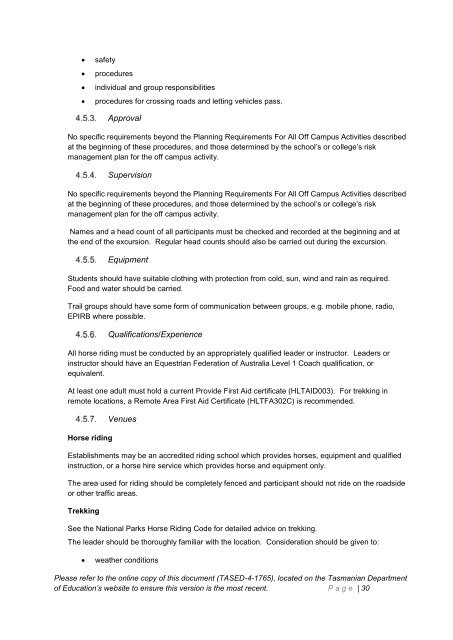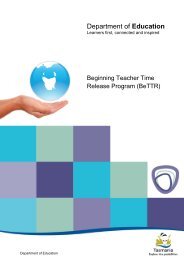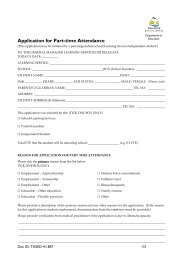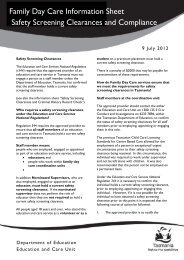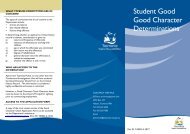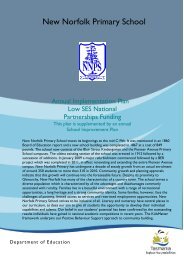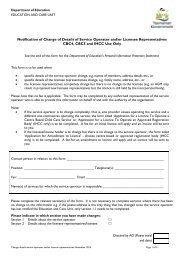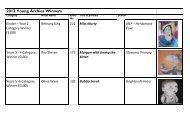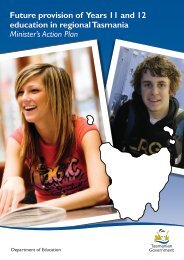PLANNING OFF CAMPUS ACTIVITIES
Procedures for Planning Off Campus Activities - Department of ...
Procedures for Planning Off Campus Activities - Department of ...
- No tags were found...
You also want an ePaper? Increase the reach of your titles
YUMPU automatically turns print PDFs into web optimized ePapers that Google loves.
safety<br />
procedures<br />
individual and group responsibilities<br />
procedures for crossing roads and letting vehicles pass.<br />
Approval<br />
No specific requirements beyond the Planning Requirements For All Off Campus Activities described<br />
at the beginning of these procedures, and those determined by the school’s or college’s risk<br />
management plan for the off campus activity.<br />
Supervision<br />
No specific requirements beyond the Planning Requirements For All Off Campus Activities described<br />
at the beginning of these procedures, and those determined by the school’s or college’s risk<br />
management plan for the off campus activity.<br />
Names and a head count of all participants must be checked and recorded at the beginning and at<br />
the end of the excursion. Regular head counts should also be carried out during the excursion.<br />
Equipment<br />
Students should have suitable clothing with protection from cold, sun, wind and rain as required.<br />
Food and water should be carried.<br />
Trail groups should have some form of communication between groups, e.g. mobile phone, radio,<br />
EPIRB where possible.<br />
Qualifications/Experience<br />
All horse riding must be conducted by an appropriately qualified leader or instructor. Leaders or<br />
instructor should have an Equestrian Federation of Australia Level 1 Coach qualification, or<br />
equivalent.<br />
At least one adult must hold a current Provide First Aid certificate (HLTAID003). For trekking in<br />
remote locations, a Remote Area First Aid Certificate (HLTFA302C) is recommended.<br />
Horse riding<br />
Venues<br />
Establishments may be an accredited riding school which provides horses, equipment and qualified<br />
instruction, or a horse hire service which provides horse and equipment only.<br />
The area used for riding should be completely fenced and participant should not ride on the roadside<br />
or other traffic areas.<br />
Trekking<br />
See the National Parks Horse Riding Code for detailed advice on trekking.<br />
The leader should be thoroughly familiar with the location. Consideration should be given to:<br />
<br />
weather conditions<br />
Please refer to the online copy of this document (TASED-4-1765), located on the Tasmanian Department<br />
of Education’s website to ensure this version is the most recent. P a g e | 30


